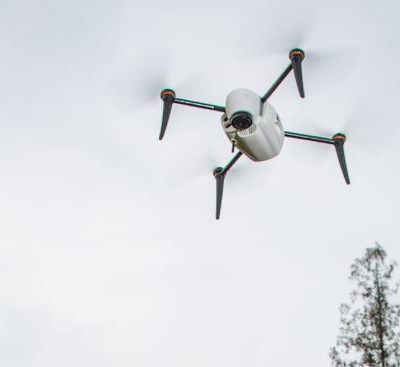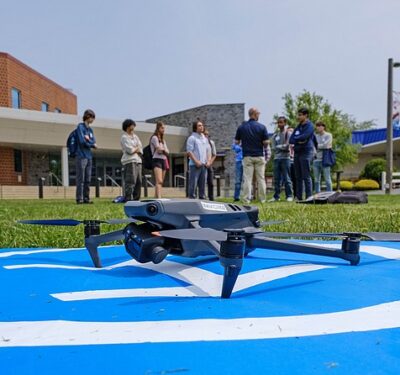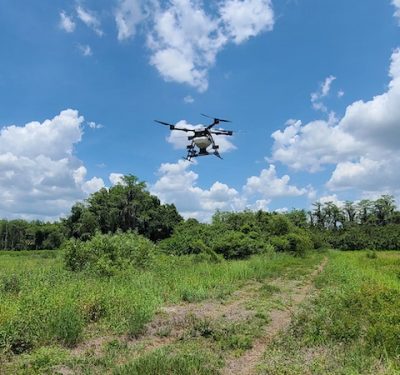
Since the early 1900s, the U.S. Army has been asking folks to sign up “now.” A few weeks ago, it asked industry to provide them the specs for a super-powered autonomous vertical take-off and landing (VTOL) resupply aircraft…now. Specifically, on January 13, 2021, the forward-looking service updated its December 2020 Request for Information (RFI) relating to the Joint Tactical Autonomous Aerial Resupply System (JTAARS), Autonomous Aerial Resupply Concept.
JTAARS is a joint Army Futures Command’s Sustainment Capabilities Development and Integration Directorate and Marine Corps’ Capabilities Development and Integration office effort to use larger automated drones for future MDO (Multi-Domain Operations) troop resupply.
The purpose of the drill remains, “to begin dialogue and exchange data between government proponent Capability Developers/Materiel Developer Action Officers, the Joint Staff, Service Staffs, Army S&T and RDT&E agencies, academia and industry pertaining to our initial JTAARS robotic/automated capabilities; and provide Industry with the concept of operations which each service intends to utilize when employing Medium payload automated unmanned aerial system [UAS] capabilities for future Multi-Domain Operations [MDO] Infantry Brigade Combat Team organic sustainment.”
According to the Army Modernization Strategy, MDO is the name of the game, and it’s all about fighting and winning in armed conflict using integrated land, sea, air, space and cyberspace effects. Unmanned aircraft systems, with an emphasis on vertical lift, will play a front-and-center role in the maneuver modernization program.
The Army’s current “ask” of industry is challenging. Essentially it requires a night/day capable super-lightweight long endurance Group 3 (or lower) VTOL system-in-a-box that can fly in virtually any condition, with all the bells and whistles, and can carry up to 800 pounds. It needs to be ready to roll onto the battlefields in the next five years.
Those bells and whistles include significant capabilities such as: beyond line-of-sight command and control (C2) with approximate 110 mile radius, a common handheld Ground Monitoring/Control Station, with multi-nodal autonomous functionality, all of which can be squeezed onto a 20-foot pallet.
Autonomy requirements span across launch, flight, navigation (including GPS-denied), cargo drop, landing and return to original launch location; detect-and-avoid and negotiating shared airspace; and generating complete paths from takeoff to landing, modifiable in real time by a human in the loop.
Not surprisingly with a largely autonomous system, cyber-requirements are foundational. These include: a universal and C2 integratable common controller; modular open systems architecture for hardware and software that will accommodate different payloads and mission planning software, navigation systems, vehicle management systems, lost link and shut down capabilities and C2 systems; and, last but not least, cybersecurity capability (undefined).
At takeoff, presumably with tonnage aboard, the vehicle must notionally weigh under 1,320 pounds max gross. Maxed out, that’s a no-more-than 520-pound bird. Compare that to the average helicopter, which the Federal Aviation Administration’s (FAA) Weight and Balance Handbook puts at 1,545 pounds (page 8-4)
Once aground, the system must be able to be lifted by no more than four soldiers who can fully assemble it in about 15 minutes.
A tall order, by any standard.
Industry gets to file its PowerPoint presentation and short (no more than 10 page) white paper responding to the 40 specific requirements and questions asked, no later than 4pm ET on Friday, 12 February 2021. If you are interested, don’t miss the requirement to email three days prior to the deadline to get the submission link. Answer the call now, and maybe, just maybe, you can land a chunk of those $33 billion programmed modernization dollars!
BIO:
Dawn M.K. Zoldi (Colonel, USAF, Retired) is a licensed attorney and a 25-year Air Force veteran. She is an internationally recognized expert on unmanned aircraft system law and policy, a recipient of the Woman to Watch in UAS (Leadership) Award 2019, and the CEO of P3 Tech Consulting LLC.






